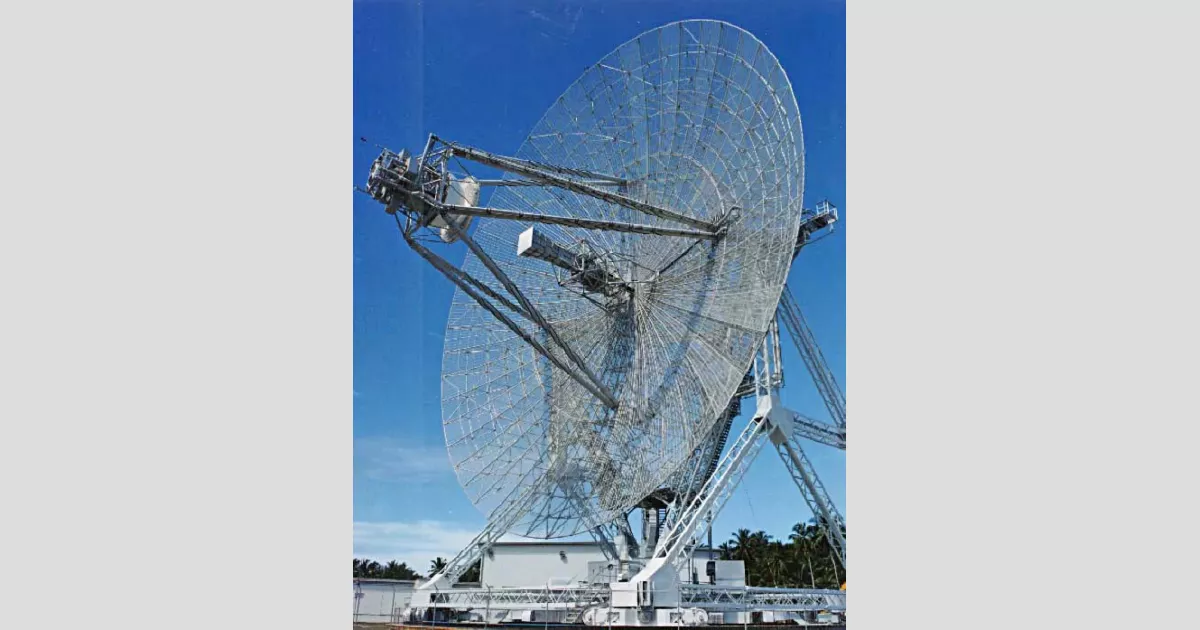Radar is a radiodetermination system using radio waves to detect and track the range, direction, and radial velocity of objects. It's used for various purposes like tracking aircraft, ships, vehicles, mapping weather, and terrain. Coined as an acronym for 'radio detection and ranging' by the US Navy in 1940, the term has since become a common noun.
April 1904: Hülsmeyer Patents Detection Device
In April 1904, Christian Hülsmeyer obtained a patent for his device that detects the presence of distant metallic objects using radio waves. This was followed by a patent for an amendment estimating the distance to a ship.
September 1904: Hülsmeyer Patents Full Radar System
On September 23, 1904, Christian Hülsmeyer obtained a British patent for a full radar system called a telemobiloscope. It operated on a 50 cm wavelength, used a spark-gap for pulsed radar signals, and featured a horn antenna with parabolic reflector. The system was presented to German military officials in practical tests but was rejected.
1915: Watson-Watt Uses Radio for Thunderstorm Warning
In 1915, Robert Watson-Watt used radio technology to provide advance warning of thunderstorms to airmen.
1922: Taylor and Young Discover Signal Fading Due to Ships
In 1922, U.S. Navy researchers A. Hoyt Taylor and Leo C. Young discovered that ships passing through a radio beam path caused the received signal to fade in and out while experimenting by placing a transmitter and receiver on opposite sides of the Potomac River. Taylor suggested this could detect ships in low visibility, but the Navy did not immediately continue the work.
1928: Alder Takes Out Secret Provisional Patent for Naval Radar
In 1928, L. S. Alder took out a secret provisional patent for Naval radar in the UK.
January 1931: First Official Record of Coastal Defence Technology in Great Britain
In January 1931, a writeup on the apparatus developed by W.A.S. Butement and P. E. Pollard was entered in the Inventions Book maintained by the Royal Engineers. This is the first official record in Great Britain of the technology that was used in coastal defence and was incorporated into Chain Home as Chain Home (low).
December 1934: First Pulsed Radar Apparatus Demonstrated
In December 1934, Robert M. Page at the Naval Research Laboratory demonstrated the first elementary pulsed radar apparatus.
1934: CSF Begins Developing Obstacle-Locating Radio Apparatus
In 1934, following systematic studies on the split-anode magnetron, the research branch of the Compagnie générale de la télégraphie sans fil (CSF) began developing an obstacle-locating radio apparatus.
February 1935: Daventry Experiment
On February 26, 1935, the Daventry Experiment, using a BBC shortwave transmitter, detected a bomber flying around the site. Hugh Dowding was impressed, providing funds for operational development, and Watson-Watt's team patented the device.
May 1935: Germany Tests Surface-to-Surface Radar
In May 1935, Rudolf Kühnhold and the firm GEMA in Germany successfully tested a primitive surface-to-surface radar for aiming coastal battery searchlights at night.
June 1935: Great Britain Demonstrates Pulsed System
In June 1935, an Air Ministry team led by Robert Watson-Watt in Great Britain demonstrated a pulsed radar system.
1935: Radar Aspects Installed on Ocean Liner Normandie
In 1935, aspects of the obstacle-locating radio apparatus developed by CSF were installed on the ocean liner Normandie.
1935: Working Radar Systems Produced
In 1935, the team produced working radar systems and began deployment.
September 1936: Watson-Watt Becomes Superintendent of Bawdsey Research Station
On September 1, 1936, Robert Watson-Watt became superintendent of the new Bawdsey Research Station under the British Air Ministry.
1936: First Chain Home Systems Operational
By 1936, the first five Chain Home (CH) systems were operational.
1938: First Commercial Radar Device Fitted to Aircraft
In 1938, the first commercial device fitted to aircraft was a Bell Lab unit on some United Air Lines aircraft.
1939: Chain Home Operational
By 1939, aircraft detection and tracking stations called "Chain Home" were installed along the East and South coasts of England. It provided vital advance information for the Royal Air Force during the Battle of Britain as part of the "Dowding system".
1939: Soviets Produce First Mass Production Radars
In 1939, the Soviets produced their first mass production radars, RUS-1 and RUS-2 Redut. Development was later slowed due to the arrest of P.K. Oshchepkov.
April 1940: Popular Science Shows Radar Unit
In April 1940, Popular Science showed an example of a radar unit using the Watson-Watt patent in an article on air defence.
1940: Chain Home Stretched Across UK
By 1940, Chain Home stretched across the entire UK including Northern Ireland.
1940: Tizard Mission and Cavity Magnetron Development
In 1940, the UK shared the cavity magnetron technology with the U.S. during the Tizard Mission. The cavity magnetron was a key development that allowed the creation of relatively small systems with sub-meter resolution.
1940: RADAR Acronym Coined
In 1940, the United States Navy coined the term RADAR as an acronym for "radio detection and ranging". The term radar has since entered English and other languages as an anacronym, a common noun, losing all capitalization.
1941: Popular Mechanics Article
In late 1941 Popular Mechanics had an article in which a U.S. scientist speculated about the British early warning system on the English east coast and came close to what it was and how it worked. Also, in 1941 Watson-Watt was sent to the U.S. to advise on air defense after Japan's attack on Pearl Harbor.
June 1943: First Russian Airborne Radar Enters Service
In June 1943, the first Russian airborne radar, Gneiss-2, entered into service on Pe-2 dive bombers.
1943: Monopulse Technique Improved Radar
In 1943, Page greatly improved radar with the monopulse technique that was used for many years in most radar applications.
1944: Production of Gneiss-2 Stations
By the end of 1944, more than 230 Gneiss-2 stations were produced.
1978: Aircraft Loss Attributed to Silicate Ester Fire
In 1978, the loss of a U.S. Navy aircraft was attributed to a silicate ester fire. Coolanol (silicate ester) was used in several military radars in the 1970s. However, it is hygroscopic, leading to hydrolysis and formation of highly flammable alcohol. The U.S. Navy has instituted a program named Pollution Prevention (P2) to eliminate or reduce the volume and toxicity of waste, air emissions, and effluent discharges.
2017: NOAA Plans National Network of Phased Array Radars
As of 2017, NOAA plans to implement a national network of multi-function phased array radars throughout the United States within 10 years, for meteorological studies and flight monitoring.
Mentioned in this timeline
The Union of Soviet Socialist Republics USSR existed from to...
Japan is an East Asian island country in the Pacific...
Germany officially the Federal Republic of Germany is a Central...
France officially the French Republic is primarily in Western Europe...

Books are a means of storing information as text or...

Fire is a rapid oxidation process specifically combustion that releases...
Trending

20 minutes ago Hozier to Headline Portland Concerts After Soundside Music Festival Cancellation
21 minutes ago Prince Andrew Faces Scrutiny Over Jeffrey Epstein Ties; Demands to Testify Publicly

21 minutes ago Ninel Conde faces criticism and a diva duel in 'La Casa de los Famosos'.

21 minutes ago Los Ratones might skip EMEA Masters for LoL Worlds in China, Paris Finals.

22 minutes ago Vivienne Westwood's Company Addresses Artists' Complaint; Jenna Ortega on Overwhelming Fame.
21 days ago Orix Buffaloes: Teranishi aims for two wins, Kurebayashi hits grand slam, Udagawa resumes.
Popular

The Boeing Dreamliner is an American wide-body airliner developed by...

Jeff Hardy is an American professional wrestler currently signed with...

Jupiter is the fifth and largest planet from the Sun...

John Michael Ozzy Osbourne is a prominent English singer songwriter...

Jeff Bezos is an American businessman renowned as the founder...

Candace Owens is an American political commentator and author known...
